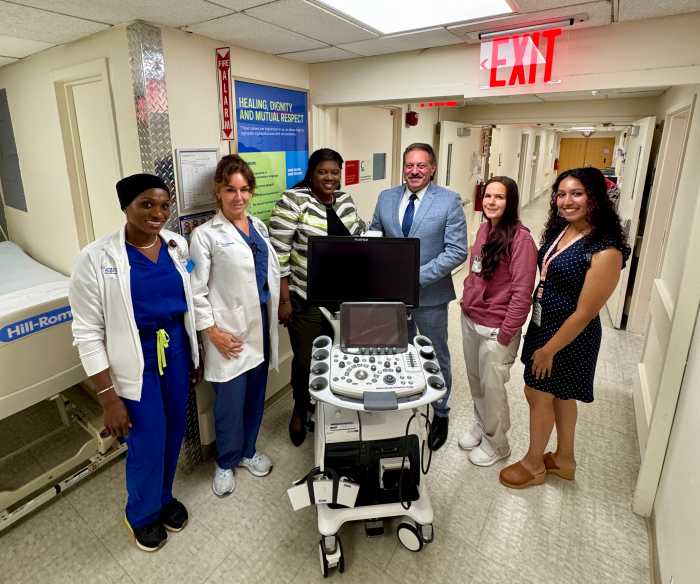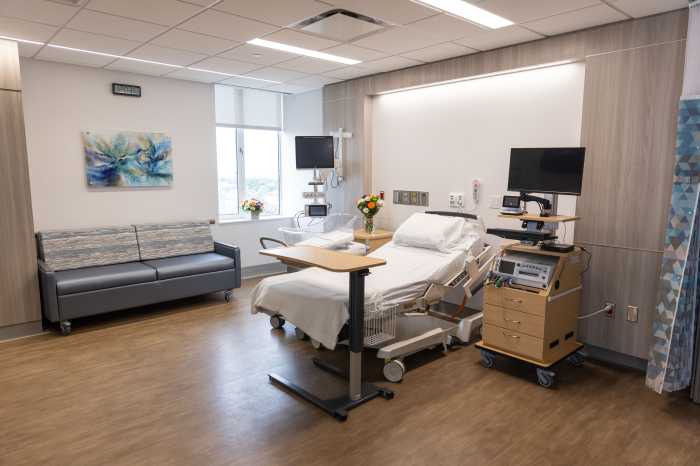BY BENJAMIN MANDILE
Leonard Carter, an inmate at Queensboro Correctional Facility, died on April 14 after contracting COVID-19. He was 61.
Carter was the first inmate at the Long Island City correctional facility to die due to complications related to the coronavirus.
Carter was six weeks away from being released from prison after he was granted parole in January 2020, after serving decades behind bars for murder in the second degree.
He entered the New York State prison system in February 1996 and was serving a sentence of 25 years to life, according to data from New York Department of Corrections and Community Supervision.
“It is a horrifying and preventable tragedy that Leonard Carter passed away from COVID-19 a mere six weeks from his release date and having been already granted parole,” said Katie Schaffer, director of advocacy and organizing at Center for Community Alternatives.
In response, family members of incarcerated people at Queensboro Correctional Facility and advocates plan to hold a vigil outside the correctional facility Thursday and are calling on Gov. Andrew Cuomo to “not let others die behind bars while the virus continues its spread.”
Advocates, including the families of incarcerated individuals, will meet outside of the Long Island City correctional facility at 47-04 Van Dam St. and on Zoom video conferencing at 10 a.m. on April 23.
Advocates at the Center for Community Alternatives have been attempting to reach out to Carter’s family and said they want to invite the family to the Thursday vigil, but have not been able to get in contact with them.
Carter’s family members are encouraged to reach out to Schaffer through email at kschaffer@communityalternatives.org.
But Carter was not alone.
There are 344 individuals incarcerated statewide who are awaiting release after being granted parole.
There are not many of the 344 individuals that could be included in Gov. Andrew Cuomo’s “limited plan” to release a select few of older prisoners who are within 90 days of their release, according to advocates. They say the only legal mechanism that could grant these cases an early release is a sentencing commutation from the governor.
New York State prisons currently hold 9,500 elder prisoners and 4,788 people within one year of release.
Advocates are urging the governor for “wide-ranging” clemency for people who are medically vulnerable, elderly and for people who are within a year of their release.
It is not clear if the governor will extend clemency to these individuals.
Cuomo’s limited plan includes releasing low level offenders who were picked up for technical parole violations such as missing curfew or missing a parole meeting, and releasing non-violent offenders over the age of 55 who have 90 days or less on their sentence.
In a statewide system of around 43,000 inmates only 171 inmates older than 55 currently fit this criteria for release, and according to advocates none of these 171 qualifying inmates have been released yet.
Cuomo’s office said that these 171 identified inmates will be released in the coming days, but did not provide a specific date as to when this would occur.
Officials will continue to review eligible inmates to ensure they have adequate housing.
There are also 1,800 inmates statewide who are incarcerated in local jails for parole violations.
On March 27, the governor directed DOCCS to release low-level technical parole violators from jails. These included parole violations that did not involve a weapon, a violent act and parole violators who were least likely to reoffend.
In total, 785 parole violation warrants have also been cancelled as of Wednesday for people with adequate housing and who did not present an undue risk to public safety.
Correctional facilities are taking precautions to help stop the transmission of the novel virus, according to DOCCS.
These include having corrections officers and other prison staff wear face masks while on duty, giving inmates quarantined due to COVID-19 surgical masks to stop secondary transmission and allowing inmates to wear prison-mandated handkerchiefs as face masks.
“Each action we take in response to the spread of COVID-19 is done in the best interest of those who work and are incarcerated in our facilities or supervised in the community,” the DOCCS website reads. “We will continue to evaluate all options as this situation unfolds.”
Advocates say that despite what DOCCS claims about taking precautions, they have heard “horror stories” about life behind bars during this pandemic.
These include incarcerated people not having access to hand washing, not being able to have or wear face masks and at some facilities, inmates having to wear dirty face masks.
“The reports that we’re hearing inside, all of the things that those of us at home are being told to do by the CDC and by local sort of governmental authorities to keep ourselves and other people safe, that those are really not happening inside,” said Schaffer.
Inmates at Queensboro Correctional Facility, where Carter died after contracting the virus, sleep bunk style, two feet apart from one another in large dormitory style rooms.
Advocates say that data released by DOCCS shows a “failure to test and an under-reporting of the true crisis behind bars”.
Less than 1 percent of the New York State prison population, or 350 inmates, have been tested, according to Schaffer.
As of early afternoon on Monday there were 358 COVID-19 tests done throughout the New York State prison system, according to a QNS analysis of numbers released by DOCCS.
There were 219 positive cases, 90 negative cases, 49 pending cases, 62 recovered cases and five deaths related to the virus system-wide.






































